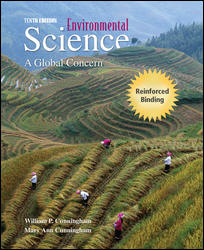1 A) In general there are 0 to 5 houses per square mile. B) In general there are 5 to 10 houses per square mile. C) In general there are 10 to 20 houses per square mile. D) In general there are 20 to 30 houses per square mile. E) In general there are 30 to 50 houses per square mile. 2 A) There is no reason to believe Atrazine would be a significant public health hazard in this area. B) By zooming out, one sees that the landscape of the wider corn belt is quite divergent from this one local area, therefore it would be a mistake to assume any correlations exist regarding health hazards. C) Even though it is called the "corn belt", not much corn is actually planted these days, so Atrazine is an insignificant health issue. D) This farming landscape covers most of this region of the continent. Throughout this landscape, the risk of exposure to farm chemicals affects a large population, including anyone who drinks well water or works with chemicals. E) Atrazine isn't water soluble, so it's unclear why it is considered dangerous. 3 A) Make farmers wear hazmat suits B) Reduce the use of chemicals and switch to alternative farming methods C) Ban the use of agricultural chemicals D) Relocate families away from farming areas E) Develop new drugs that counter the effects of exposure to chemicals





